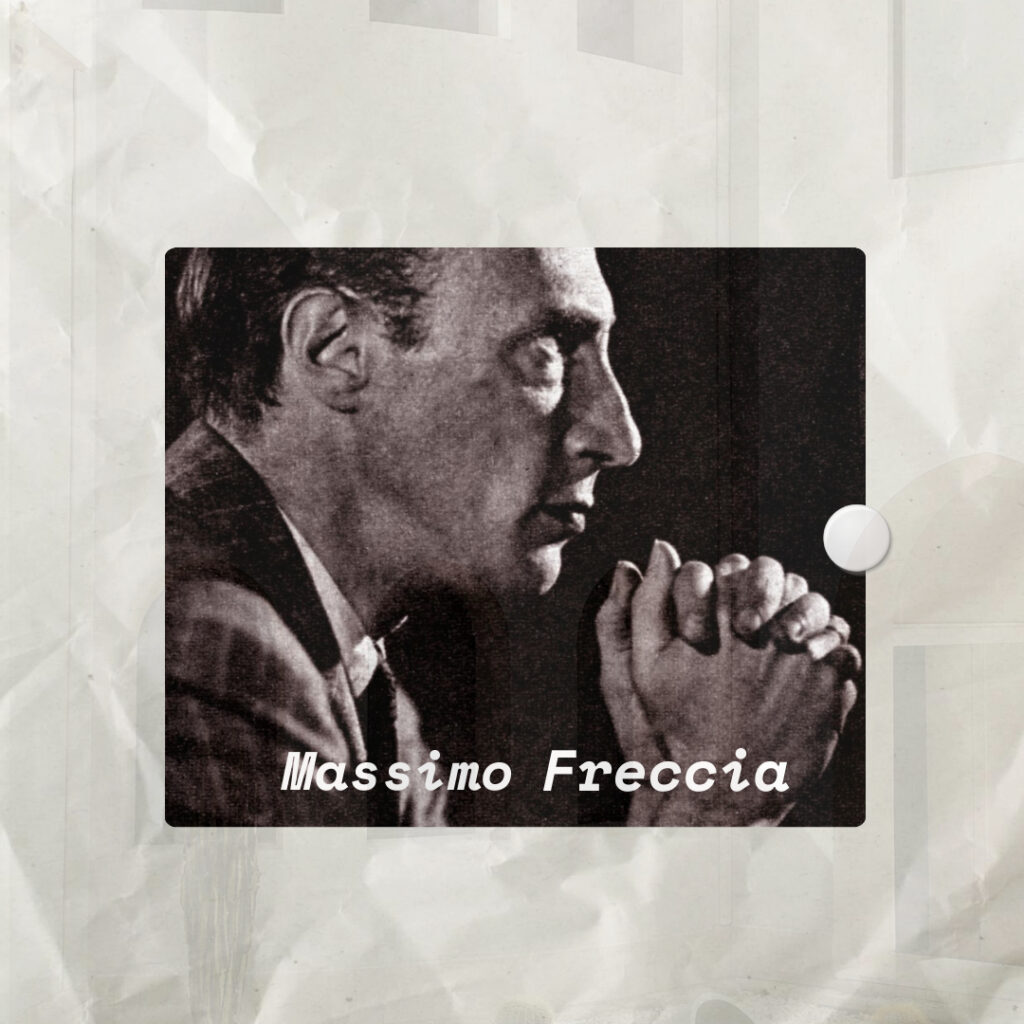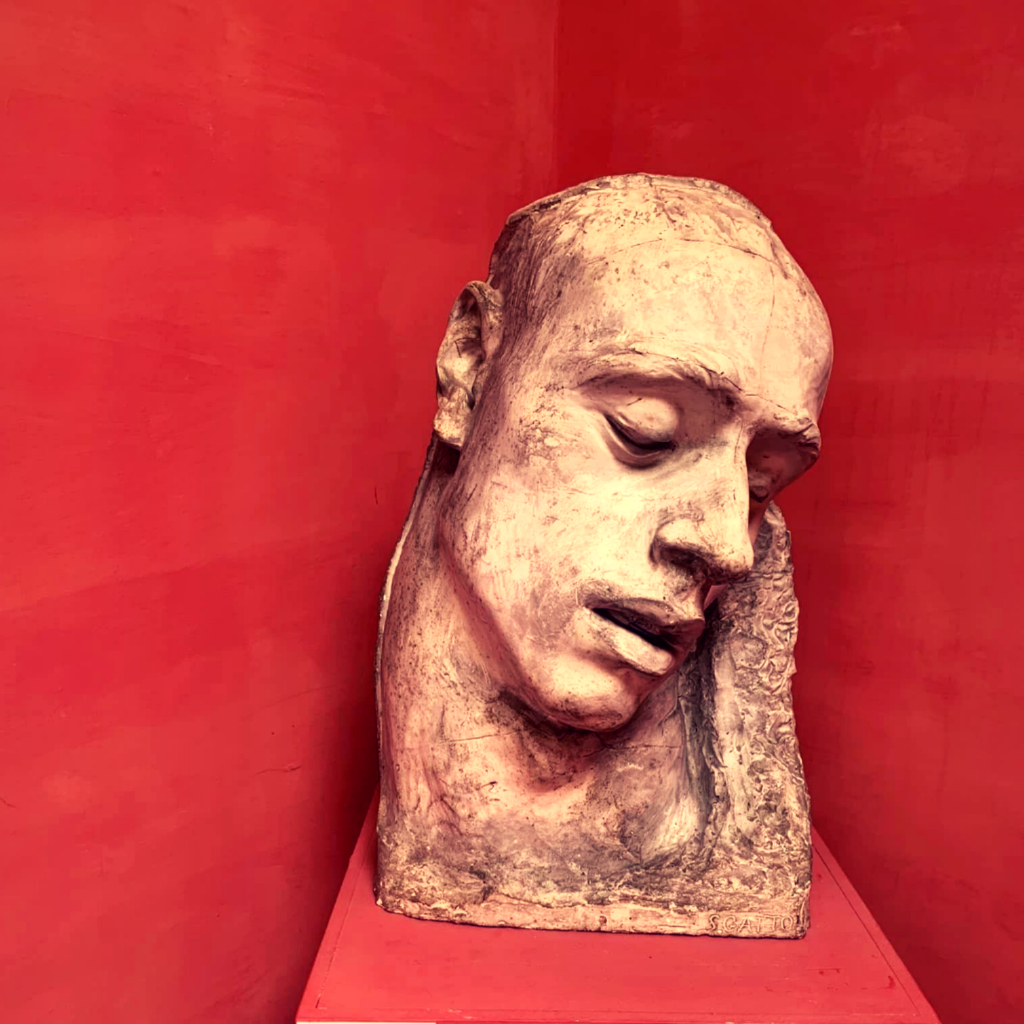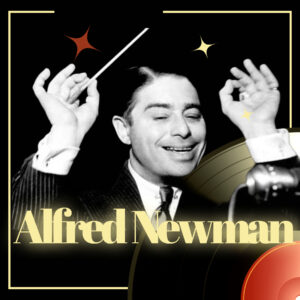
On this day 1906 Massimo Freccia, Italian-American conductor (New Orleans Symphony, 1944-52: Baltimore Symphony, 1952-59) was born in Valdibure, in the countryside of Pistoia, to a family of wealthy landowners. He studied music first in St. Petersburg as a guest of his maternal grandfather and, from 1923, at the Conservatory of Florence.
Massimo Filippo Antongiulio Maria Freccia (19 September 1906 – 16 November 2004) was an Italian American conductor. Despite his widespread fame, he was never the music director of a significant orchestra or opera house. Rather than an opera, symphonic music was the foundation of his career. He served as Arturo Toscanini’s assistant for a number of years and frequently received invitations from the conductor to lead the NBC Symphony Orchestra.
When World War I broke out, his Russian great-aunt came to live with them. His mother introduced him to Vivaldi and Corelli when he was young, and his great-aunt played hours of Tchaikovsky, Schumann, and Wagner for him. She shared memories of meeting Tchaikovsky and Rimsky-Korsakov when she was young and living in Saint Petersburg. Freccia enrolled at the Florence Conservatory of Music in 1923 when he was 17 years old. There, he made friends with composer Luigi Dallapiccola and was introduced to the non-operatic music of the contemporary school of Italian composers, including Gian Francesco Malipiero, Giorgio Federico Ghedini, Goffredo Petrassi, and Alfredo Casella.
In Florence, Freccia started his conducting career in a garage that was next to his family’s estate. He transformed the garage into a studio where he and his fellow students practiced pieces for a small orchestra. He learned how to conduct fully on his own, primarily through observing others. He was hired as an apprentice at the opera in Florence, where he played the harmonium backstage after playing the celesta in the pit to keep the prima donna in tune. From Florence, he traveled to Vienna, where he attended music hall performances of Bruckner and Mahler symphonies as well as operas conducted by Richard Strauss and Mozart masses. Franz Schalk, the State Opera’s music director at the time, was someone he met at an Italian Embassy reception.
Franz Schalk, the State Opera’s music director at the time, was someone he met at an Italian Embassy reception. Schalk became icy and called Wilhelm Furtwängler a “talented amateur” after Freccia voiced his love for the young composer’s concerts. However, he granted Freccia a permit to watch the opera’s rehearsals, where he heard vocalists like Alfred Piccaver, Leo Slezak, Lotte Lehmann, and Elisabeth Schumann. He also witnessed Schalk preside over the Oedipus Rex debut performance in Vienna. Freccia next relocated to Paris for two years, when he met Picasso, Stravinsky, and Jean Cocteau. He also met Maurice Ravel, who he introduced to a tone poem he had written in Vienna, and pianist Arthur Rubinstein.
Freccia’s orchestration and skill were praised, and Ravel performed part of it before studying the score and concluding, “But my dear young man, all that is very good, but it’s all Ravel!” His friendship with the composer Joaqun Nin made it possible for him to accept his first commission in 1929. Freccia was named assistant conductor when a ballet company centered on the ballerina Antonia Mercé y Luque (also known as La Argentina) was established in Paris. A position as conductor of a group that specializes in modern Italian music resulted from this. A Hungarian who had recently created the Budapest Symphony Orchestra took note of him when he returned to Vienna after a stint with them to command the Vienna Symphony Orchestra.
He took a gig with the Havana Philharmonic Orchestra through NYPO manager Arthur Judson, enabling him to leave Cuba and return to Italy on a long-term Italian visa. Although he thought the orchestra was a weak group, he expertly coached them and served as its music director from 1939 until 1943. He made friends with George Gershwin there, and he also met Maria Luisa (Nena) Azpiazu, the woman who would become his wife. Freccia returned to New York on a special visa after four years. He was rejected for the U.S. Army, and in 1944 became conductor of the New Orleans Symphony Orchestra, where he remained for eight years.
He relocated to Baltimore Symphony Orchestra in 1952 from New Orleans. In October 1954, Freccia conducted the British premiere of Samuel Barber’s oratorio Prayers of Kierkegaard at the Royal Festival Hall while leading the London Philharmonic Orchestra (LPO). Freccia loved it and convinced Barber to rewrite and trim this even though it had not been well received at its American premiere. It’s almost your stuff, the composer assured him. For numerous years, Freccia conducted the LPO, Philharmonia, Royal Philharmonic Orchestra (RPO), and BBC Symphony Orchestra as a guest conductor in London. As the conductor of the RAI Orchestra for six years beginning in 1959, Freccia returned to Italy. He twice led performances for Pope John XXIII during that time.
Freccia performed on a few foreign tours, first in Australia and later in Japan in 1967. Later in life, he regularly performed at Monte Carlo. He led performances with the Juilliard Orchestra in New York for four years. He led the Radio Orchestra in concerts for the RAF Benevolent Fund in 1983 and 1986 in London, and he returned to Vienna in 1981 to lead the Radio Orchestra. In honor of the 30th anniversary of Toscanini’s passing, he conducted Verdi’s Requiem in the Festival Hall on June 15, 1987, with Diana, Princess of Wales in attendance. Freccia spent a long time residing in London.
In 1998, at his final performance, he oversaw Beethoven’s Ninth Symphony in the square at Montepulciano.
Freccia died on November 16, 2004 in Ladispoli (Rome).
He is buried in the monumental cemetery of the Porte Sante in Florence.



